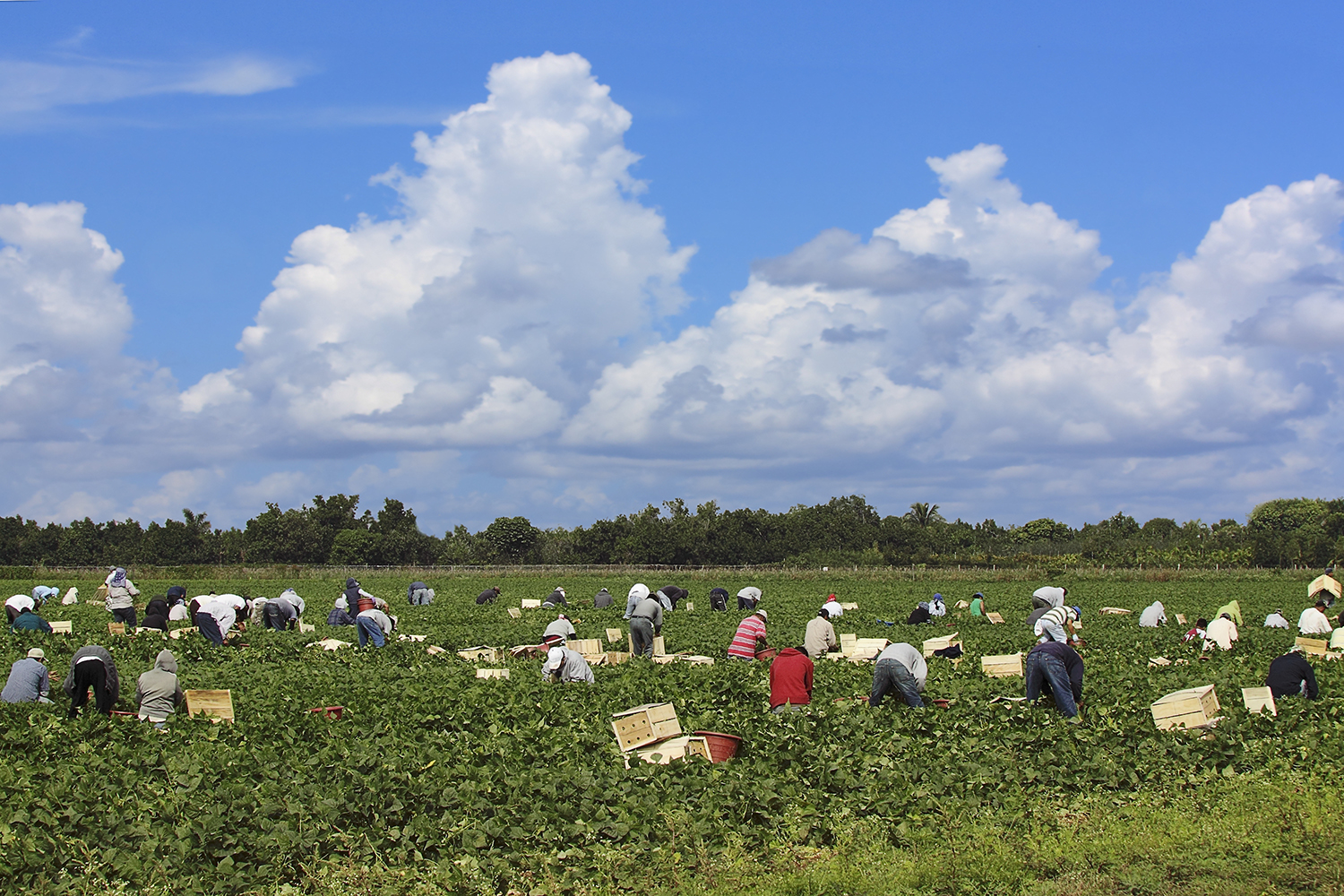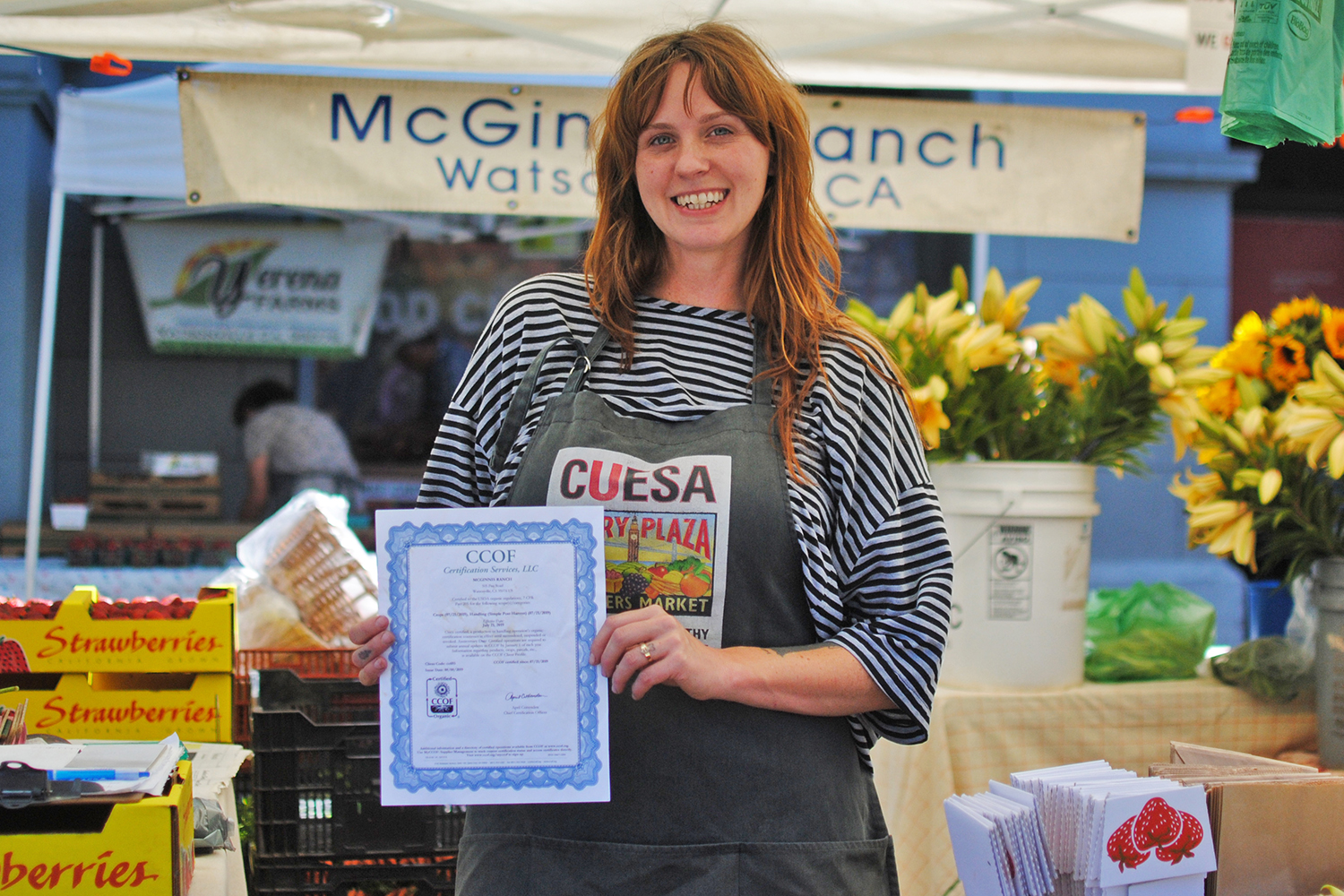Is Organic Worth It?
Savannah Kuang, CUESA Staff
August 30, 2019

You may do your best to seek out organic or sustainably grown fruits and veggies at the farmers market, while supporting local farmers. You may know that organic food is better for the environment, farmers and farmworkers, and your health. But have you wondered, what exactly does the term “organic” mean? Why does organic food tend to cost more? And what does it mean for a farm or food producer to become certified organic?
Organic 101
In order to label a product organic in the U.S., a farm or producer must follow the organic standards set by the United States Department of Agriculture (USDA) and be vetted by an approved certifier. The USDA has stringent labeling requirements for products that bare the organic seal.
In contrast to conventional farming, organic food is grown without the use of synthetic fertilizers, pesticides, sewage sludge, hormones, antibiotics, or genetically modified organisms (GMOs). The federal guidelines for organic labeling address a wide range of factors such as soil fertility, crop rotation, pest and weed control, use of additives and fertilizers, and livestock practices and animal welfare. Certification also means that farmers are dedicated to protecting natural resources, preserving biodiversity, and using only USDA-approved substances.
Farms are required to be inspected annually by accredited certifying agents such as the California Certified Organic Farmers (CCOF) and Marin Certified Organic Agriculture (MOCA). Farmers must also keep a record of their transition process, and is commonly referred to as their Organic System Plan (OSP). USDA regulations specify that farmers must use management practices to prevent pests, weeds, and diseases through crop rotation and soil and crop nutrient management practices for three years, but can receive a transitional certification after a full year of managing their crops organically. Farms that rely on synthetic fertilizers and pesticides will need an extra amount of time to rebuild soil health to meet organic standards.

The Cost of Organic
Organic farmers go to these extra lengths as part of their commitment to sustainable land stewardship and providing healthy food for their community, but there can be barriers to getting certified. While organic certification offers many benefits to farmers such as improving soil health and providing access to new markets, it comes at a high cost, which can be prohibitive for small farmers who already operate on slim margins.
Organic farming costs more than conventional farming due to additional costs in labor and switching fertilizers. “It costs more to farm organically, especially with manual labor, and certification costs need to be factored in as well,” says CCOF inspector Casey Havre, who also farms at Lagier Ranches, which has been CCOF certified since 1997. Completing the certification paperwork can be an additional burden for farmers who are already working long hours.
Access to land is challenging for new farmers who are seeking to farm organically, as well as existing farmers who are looking to convert from conventional farming. Going organic must also include different marketing strategies, since organic farms must compete with lower prices from conventional farms.
As another barrier, Casey often meets farmers who are unfamiliar with the vocabulary and the certification process, resulting in a steep learning curve. “If a farmer is from a community or area where there aren’t many other organic farmers to network with, it can be difficult for the farmer to figure out what works and what doesn’t.” Fortunately, some resources can be utilized through CCOF. “The CCOF has a new program called the OSP Walk-Through Service where there’s a specific person to walk them through their organic system plan,” says Casey. “I think that helps, as there’s a lot more paperwork involved for farms to become certified organic.”

Putting Organic into Practice
Despite the various hurdles, many farmers are going the extra mile to get certified, as demand for organic food continues to grow. In 2018, organic sales surpassed $50 billion, claiming almost 6 percent of the food market, with organic fruits and veggies accounting for over a third of those sales.
Sandi McGinnis-Garcia and her niece, Sara Evett, took over McGinnis Ranch after Sandi’s father, Howard McGinnis, retired in 2015. While the farm had a number of organic practices in place already, Sandi and Sara committed to transitioning the entire operation to organic production so that they could receive their certification. They also received a Healthy Soils grant from the California Department of Food and Agriculture (CDFA) as part of an initiative to improve soil health and reduce greenhouse gas emissions on their farm. After three years, they completed their organic transition and received certification from the CCOF this summer.
For Sandi, becoming certified organic has been worth the investment because it provides a sense of ease for farmers market shoppers who are looking for organic food. “Shoppers will no longer have to be hesitant when they buy our strawberries,” says Sandi. “But now, they can feel good about their purchase and confident about how the food was produced.”
Sara agrees. “People at the market want to see signs that show the process you’ve gone through to become an organic farmer,” she said. “New shoppers, especially, want to see that certificate, and it’s helpful for us because they don’t have to stop and ask if we’re certified organic. It gives them that sense of trust with us as farmers.”
Sara hopes to see more conventional farms adapt organic practices. “As organic farmers, part of the prerequisite is that you’re preserving biodiversity, and you’re not impacting the land more than you need to,” she says. “That’s why it’s important to put organic farming into practice, even if you have a small farm or not.”

Look for Lagier Ranches in the back plaza on Saturdays and McGinnis Ranch in the front plaza on Tuesdays and Saturdays at the Ferry Plaza Farmers Market.
